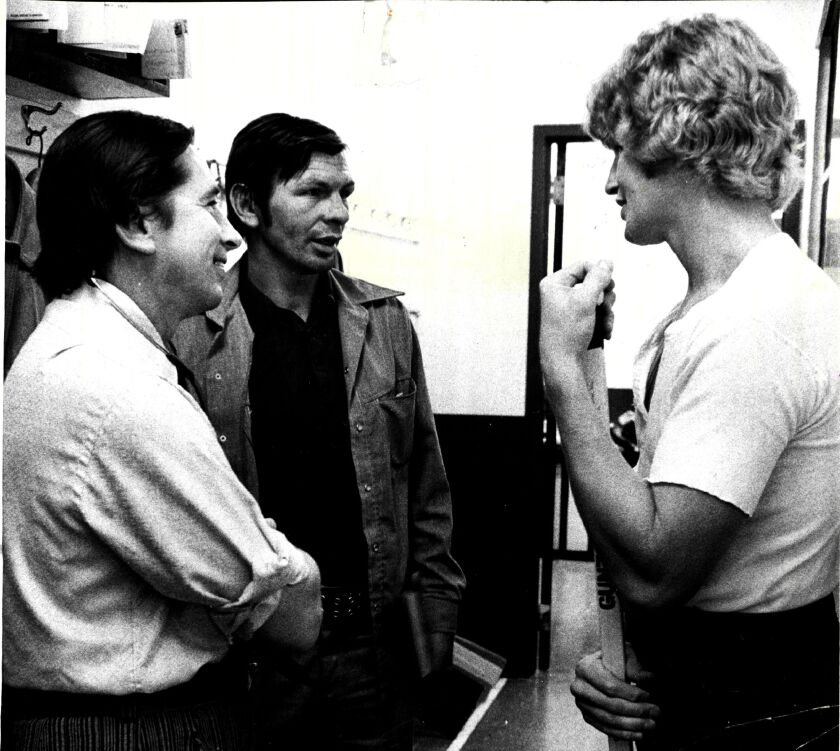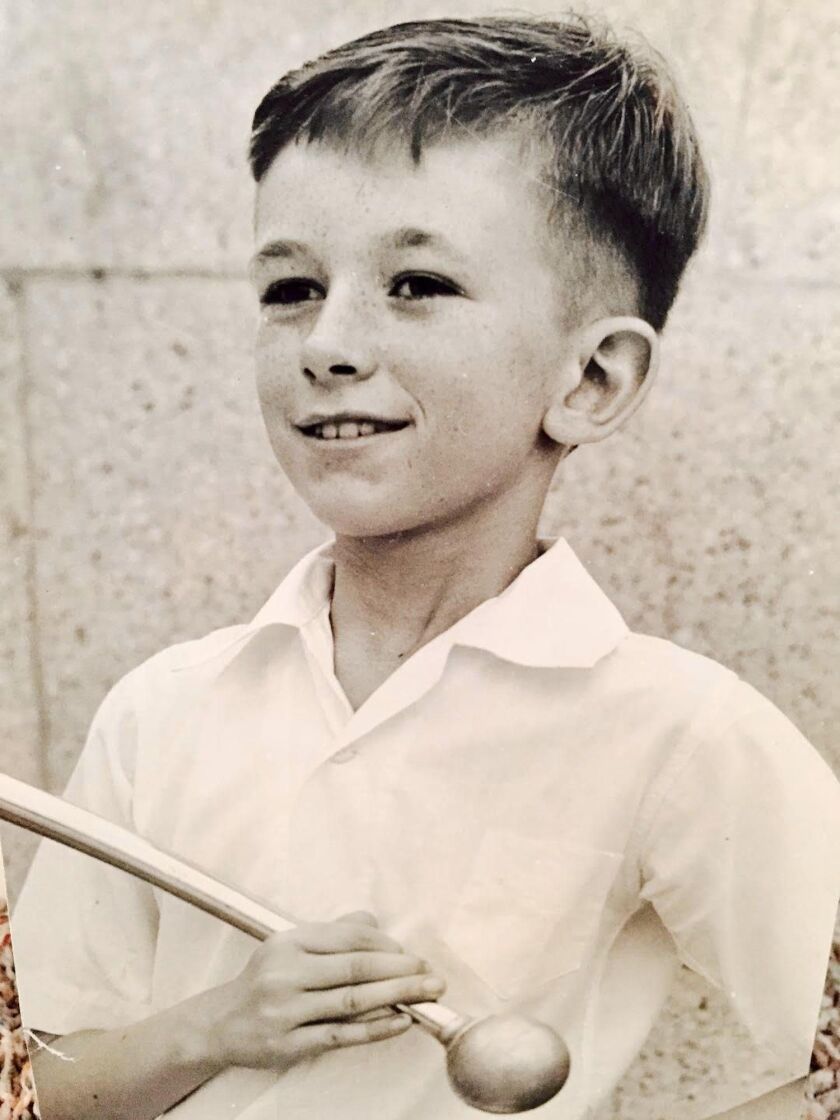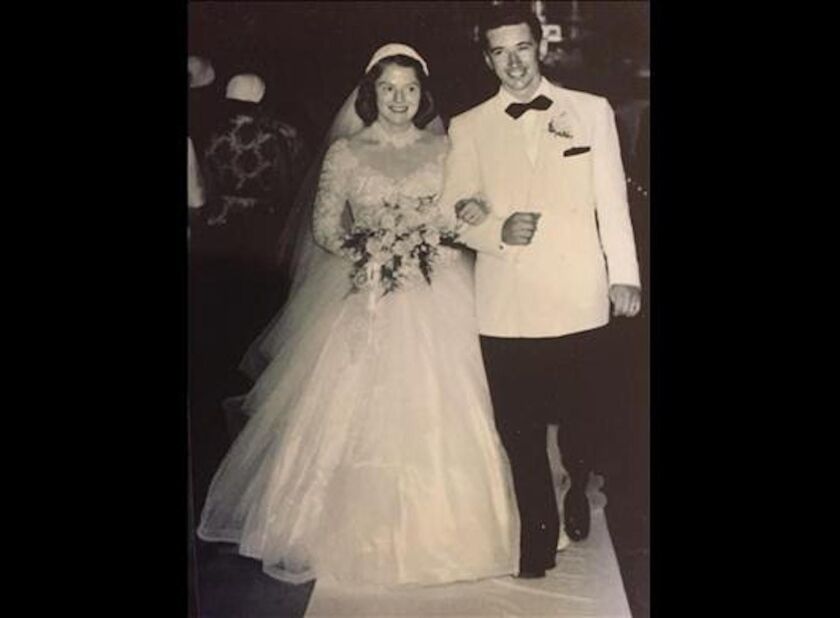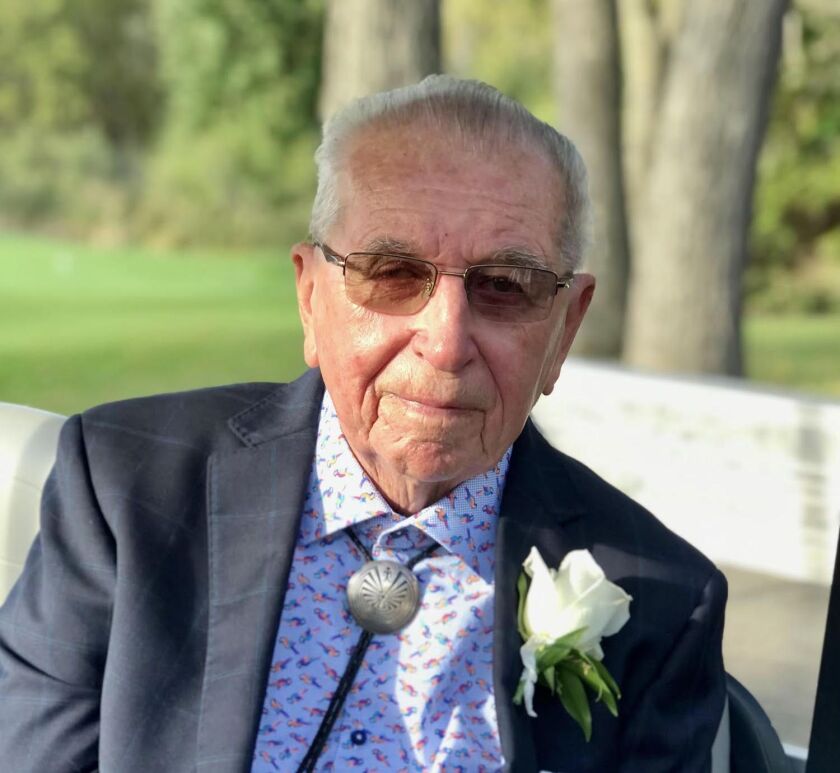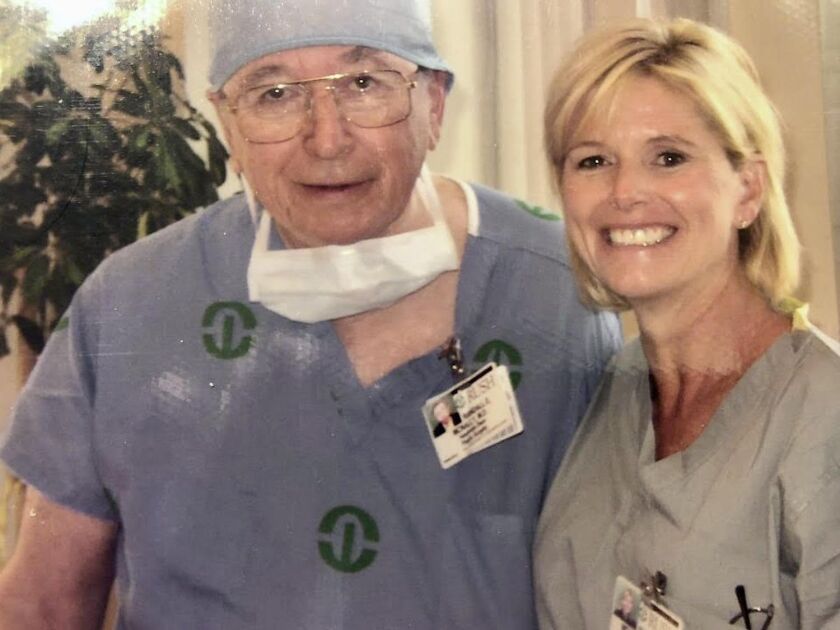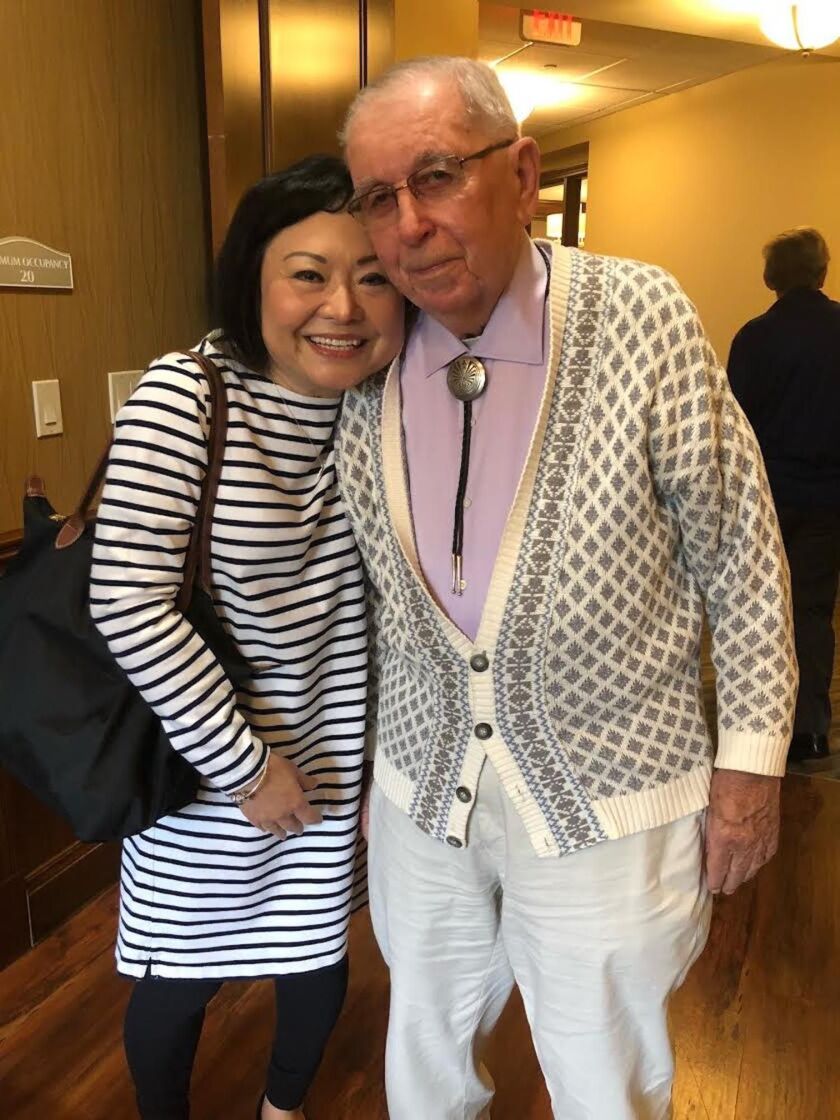In 1972, Dr. Randall E. McNally, a Chicago plastic surgeon, traveled to Vietnam to recover the remains of his brother-in-law Thomas Kenny and his wife and four children, who were among more than 80 people killed when a bomb caused the crash of a Cathay Pacific airliner.
While awaiting news of his family members, Dr. McNally volunteered to do reconstructive surgery at the Barsky center in Saigon. He ended up with a patient the world knows as the napalm girl from one of the most widely known photographs of the 20th century.
Associated Press photographer Nick Ut won the Pulitzer Prize for the indelible image he captured of Kim Phuc Phan Thi, a 9-year-old South Vietnamese girl, running down a road, screaming in pain from napalm burns. The photograph made people question U.S. involvement in the Vietnam War.
“I became a victim of war,” Phan Thi, now 59, said after Dr. McNally’s death Monday at 92 at Lake Forest Hospital of what his son Edward said was “old age.” “But there are so many good people like Dr. McNally. They try to work so hard to help many people, and, among them, I was one.”
Now living near Toronto, she created the Kim Foundation International to aid children injured in war.
“I love him so much,” she said. “I owe him and all the doctors and nurses. They inspired me and made me have a dream to help people, like they helped me.”
According to Rush University Medical Center, where Dr. McNally formerly chaired the plastic and reconstructive surgery department, he was Phan Thi’s primary surgeon for three operations in which he grafted skin taken from her thighs and buttocks onto the napalm-burned parts of her body.
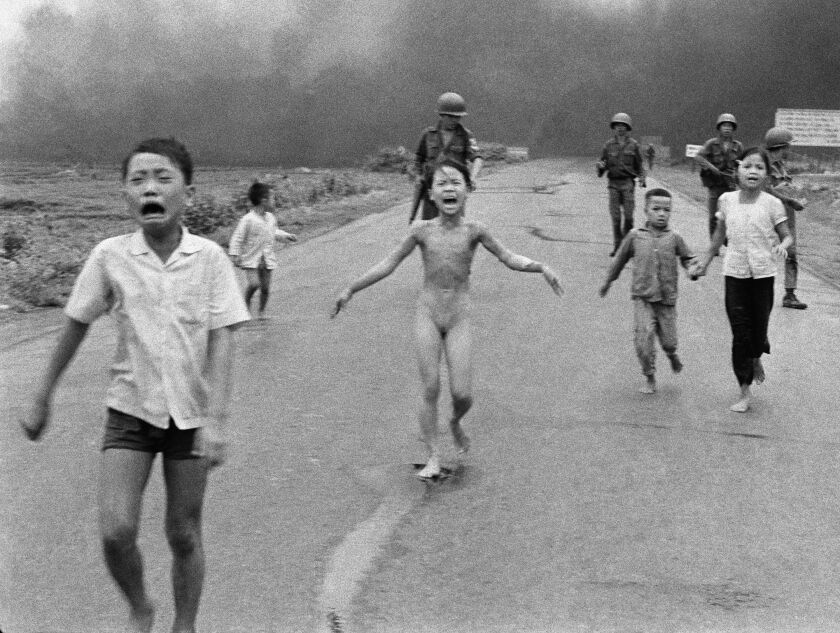
In this June 8, 1972, photo, crying children including 9-year-old Kim Phuc Phan Thi (center), run down Route 1 near Trang Bang, Vietnam, after an aerial napalm attack on suspected Viet Cong hiding places, as South Vietnamese forces from the 25th Division walk behind them. A South Vietnamese plane accidentally dropped its flaming napalm on South Vietnamese troops and civilians. From left, the children are Phan Thanh Tam, younger brother of Kim Phuc, who lost an eye, Phan Thanh Phouc, youngest brother of Kim Phuc, Kim Phuc, and Kim’s cousins Ho Van Bon and Ho Thi Ting.
Nick Ut / AP
Dr. McNally worked at Rush for half a century. He did cosmetic surgery and also was a powerful advocate there for new plastic surgery techniques that improved the appearance of badly injured people and sometimes saved limbs, according to Dr. Craig Bradley, who is among the former medical residents who trained under him at Rush.
“A lot of us went into plastic surgery because we wanted to be like Randy,” said Bradley, now retired, who considers himself one of the surgeon’s many “McNallyites.”
Among his patients, Dr. McNally stitched up the torn faces of many Chicago Blackhawks players as a physician for the National Hockey League team. The Hawks’ Pat Stapleton was one of them. After a collision in a 1971 game against the Montreal Canadiens, the Chicago Sun-Times reported that Stapleton’s skate-slashed face “resembled a road map, created by Dr. Randall McNally (honest).”
“Fifty-two stitches on the outside,” Stapleton said at the time, “and at least that many on the inside of my mouth.”
Randy McNally grew up on the South Side near 80th and Wood streets in Little Flower parish, the son of Mary and Edward McNally, who owned the McKee Garage Door company. At 9, he started delivering the Saturday Evening Post. By 11, he had a job as a drugstore soda jerk, according to his family. He also was a champion baton twirler, competing in state contests.
As a kid, he already had the nickname “Doctor.”
“He wanted to provide for his family and give back to the world,” his son said.
Randy McNally attended Mount Carmel High School, where he ran track and was a drum major. He got his bachelor’s degree in physics from the University of Notre Dame and went on to St. Louis University School of Medicine, where he was class president.
That’s where he met Margaret Anne Kenny, his future wife of 61 years. They had 10 kids in 14 years and raised them in Northbrook.
Dr. McNally served in the Air Force Reserve from 1955 into the 1980s and was on active duty in the early 1960s as a captain and surgeon at Lackland Air Force Base in San Antonio, Texas, where he cared for troops returning from Vietnam, his son said.
Dr. McNally reconnected with Phan Thi in 1996 — an encounter that was filmed for the documentary “Kim’s Story: The Road from Vietnam.”
“It was so meaningful for both of us,” she said. “He was extremely happy that he saw my life” and how it turned out. “He checked my health and my scars.”
“Psychologically, she’s made a wonderful adaptation to her injury,” Dr. McNally said in the documentary. “Everybody doesn’t. She’s converted it to something good. I think it’s spectacular that my ... mission over there was to help heal her and others like her, and now she’s attempting to heal the Vietnam wounds of our nation.”
In 1974, he operated on his own wife after she was diagnosed with a melanoma that threatened her eyesight, their son said.
For years, Dr. McNally drove a purple Cadillac Eldorado with the license plate “FACES R,” which made some people mistakenly think its owner must be connected with the once-famous Faces discotheque.
“They assumed he was the grooviest club-hopper in Chicago,” his son said.
He said his father also had a custom Cadillac stretch limousine, which seemed to be the only car big enough to accommodate a family of 12 in an era before minivans: “He drove it to work every day, so he looked like a chauffeur.”
He was always quick with a quip. Often when he pulled out his credit card, cashiers would assume he was from the Rand McNally empire and ask, “Wait, are you the map guy?”
He’d reply: “I own Rand McNally maps. I’ve got some in the glove compartment.”
Dr. McNally taught his kids to treat everyone with respect.
“He knew the names of the kids of every worker in the parking garages, gas stations and blue-collar bars” he’d stop at with his wife, said Edward McNally, a former U.S. attorney for Southern Illinois who also was a speechwriter for President George H.W. Bush and the White House’s first general counsel for homeland security.
Dr. McNally also is survived by his daughters Tara Montgomery, an executive producer for the Oprah Winfrey Network, Sheila McNally, who worked at her father’s side as a surgical nurse, Maureen Morrissey, a physical therapist and clerk for the village of Northbrook, and McNally Sagal, an actor who has appeared on TV shows including “Sons of Anarchy,” sons Patrick, an Underwriters Laboratories executive, Ryan, a futures trading executive, and Dr. Thomas McNally, a spinal surgeon.
Another son, Lt. Cmdr. Randall E. McNally II, a Navy reserve pilot, died when his jet crashed in San Francisco Bay in 1994. The McNallys’ eldest daughter Anne died by suicide while studying occupational therapy at Northwestern University.
Dr. McNally is also survived by 30 grandchildren and 14 great-grandchildren.
Visitation is planned from 4 to 8 p.m. Thursday at St. Norbert Catholic Church in Northbrook, where a funeral Mass will be said at 10 a.m. Aug. 5.
Just before he died Monday, Kim Phuc Phan Thi called him. She said he could hear her voice but not respond.
“I love you, and I will miss you,” she told him. “And I will see you in heaven.”

